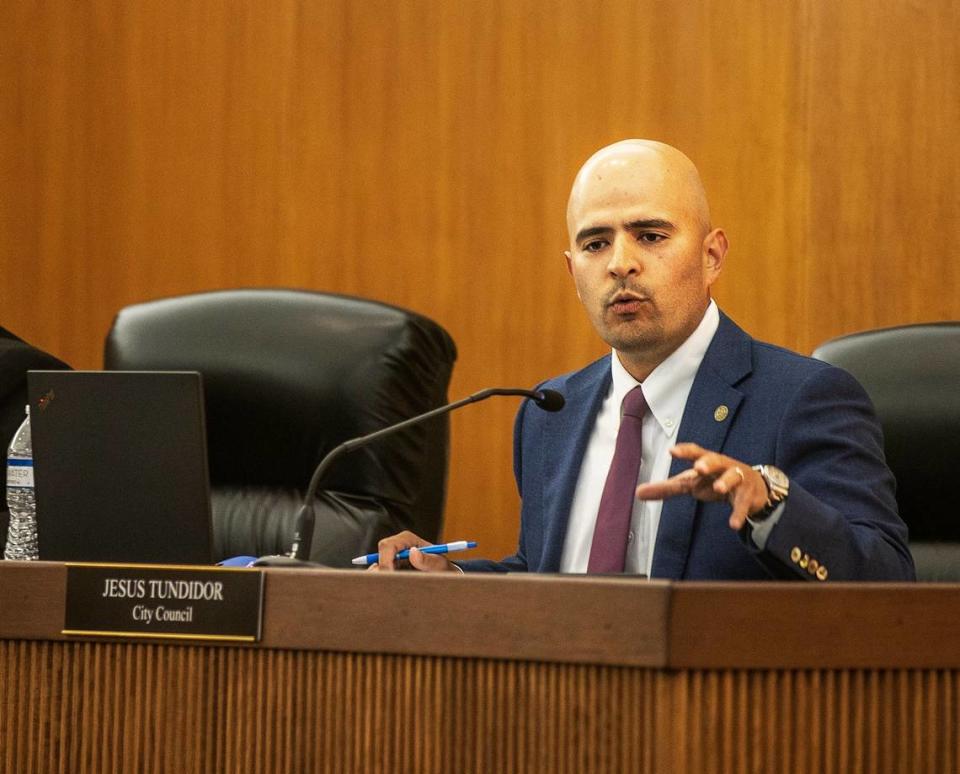Hialeah won’t annex part of this historic Black neighborhood. Will it look for other areas?
Faced with community opposition from the Brownsville neighborhood, Hialeah has reversed its project to annex part of the historic Black area of unincorporated Miami-Dade County.
Less than a month after presenting the annexation plan, Hialeah Mayor Esteban Bovo Jr. announced Tuesday night that he has dropped the effort to incorporate an industrial zone to the east of Hialeah.
“The city of Hialeah is not pursuing any Brownsville-area annexation. The city of Hialeah is not pursuing any additions to any industrial area east of the city,” Bovo explained to the City Council.
The mayor made the announcement before members of the Brownsville community spoke at City Hall. El Nuevo Herald first reported the city’s annexation efforts.
“I just want you to know,” he said, addressing Brownsville residents attending the council meeting, “that you are hearing from the mayor of the city, who is speaking on behalf of the council members. This is an issue on our end that is no longer being pursued. It is dead.”
A spokesperson for his office explained to el Nuevo Herald that the decision was made because “the community has no desire to join Hialeah.”
“Now that we are preparing a master plan for the city, we saw that just to explore the plan it was necessary to invest a lot of money and we lost interest,” his office added.
Brownsville residents welcomed the mayor’s surprise announcement. One of the proposal’s main critics, Kenneth Kilpatrick, president of the Brownsville Civic Neighborhood Association (BCNA), expressed his gratitude for Hialeah’s decision.
“We are pleased with the decision of the city, grateful the process didn’t get further,” said Kilpatrick
The Hialeah project proposed to incorporate 0.24 square miles surrounded by NW 54th St. to the north, NW 37th Ave. to the west, NW 35th, 33rd and 32nd Avenues to the east and State Road 112 to the south.
“I think that the pressure from the community, the calls, email and above all their continuing to show up at the council meetings helped show that what the city was doing was wrong,” said Kilpatrick.
In April 2022, the city hired The Corradino Group, an engineering firm, to conduct a study to determine the economic benefits of annexing the industrial part of Brownsville. The study cost Hialeah taxpayers $23,500.
The proposed annexation area is comprised of mobile homes, industrial and commercial warehouses, semi-truck lots, and rail and hazardous materials facilities, according to The Corradino Group report.
Incorporate other areas near Hialeah?
Hialeah Councilman Jesús Tundidor, who originally proposed the Brownsville plan, explained to el Nuevo Herald that “this is not the time to incorporate; there is a lot of politicking involved.”
“They started saying that we wanted to destroy a residential area and that is a lie. The limits that we created were around factories and warehouses,” he said.

Tundidor assured that Hialeah residents are asking for better services, “but they know that this comes with a cost and the only alternative is to look for another piece of land to incorporate, to increase income within the city and continue to support those services.”
The councilman promised to continue looking for other areas to incorporate, not ruling out the industrial area of Brownsville again. “It is my intention to continue looking this year for other areas,” he said.
Hialeah, with a predominantly Hispanic population, is bordered to the east by several unincorporated Miami-Dade neighborhoods, including Brownsville, Gladeview, West Little River and Westview, areas primarily inhabited by Black communities.
“Maybe five years from now we can have a better conversation and move forward in this area, but not right now,” Tundidor said.
Kilpatrick predicted Hialeah will also find rejection if it wants to annex other areas that are east of the city.
“I don’t see a single soft spot between Brownsville and Opa-locka,” he said.
If Hialeah proposes to annex an area of Brownsville again, “it will be more difficult, definitely we will continue building walls to protect our community,” Kilpatrick said.
Hialeah wants to annex their neighborhood. They just want better roads and services

